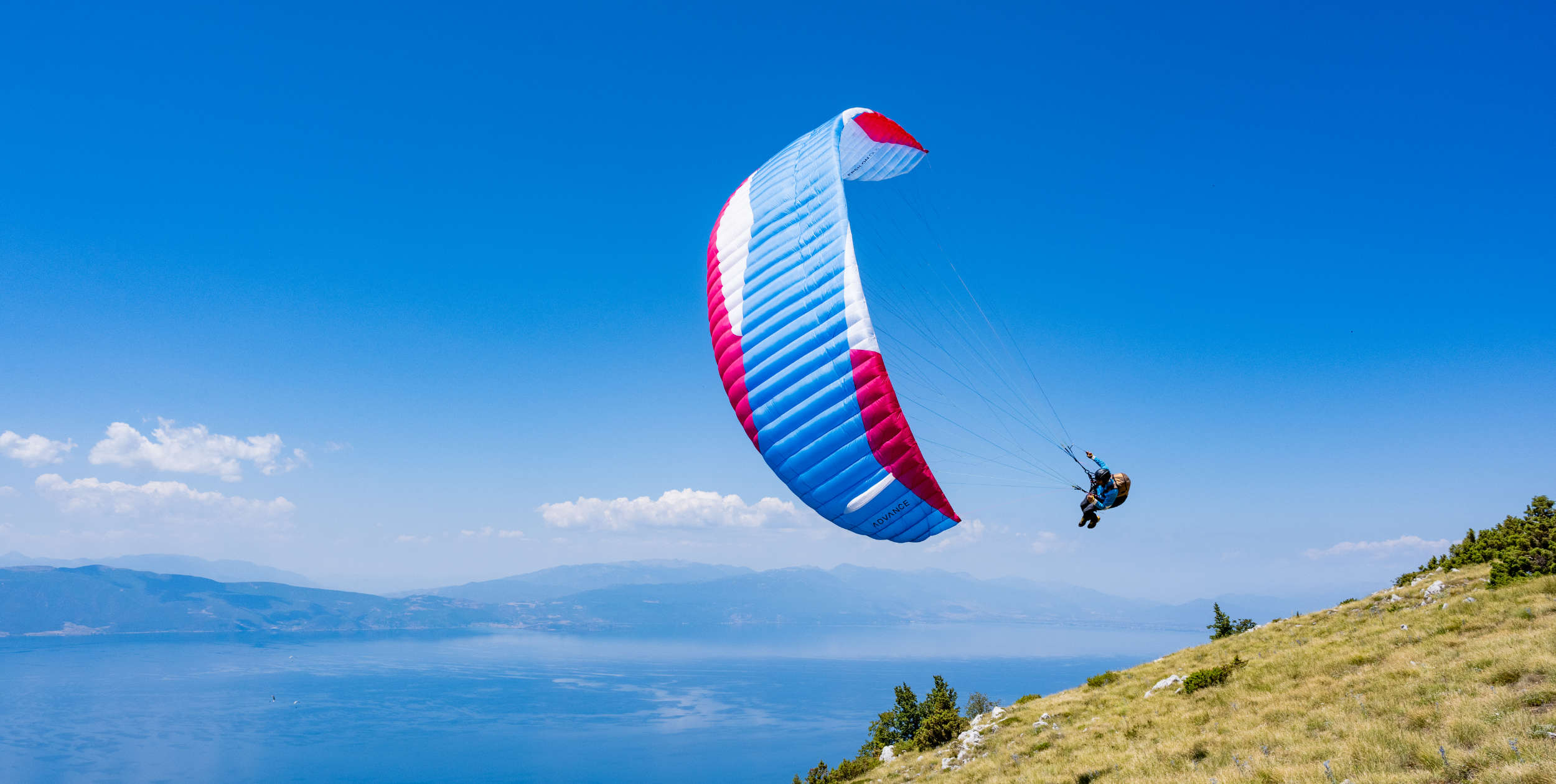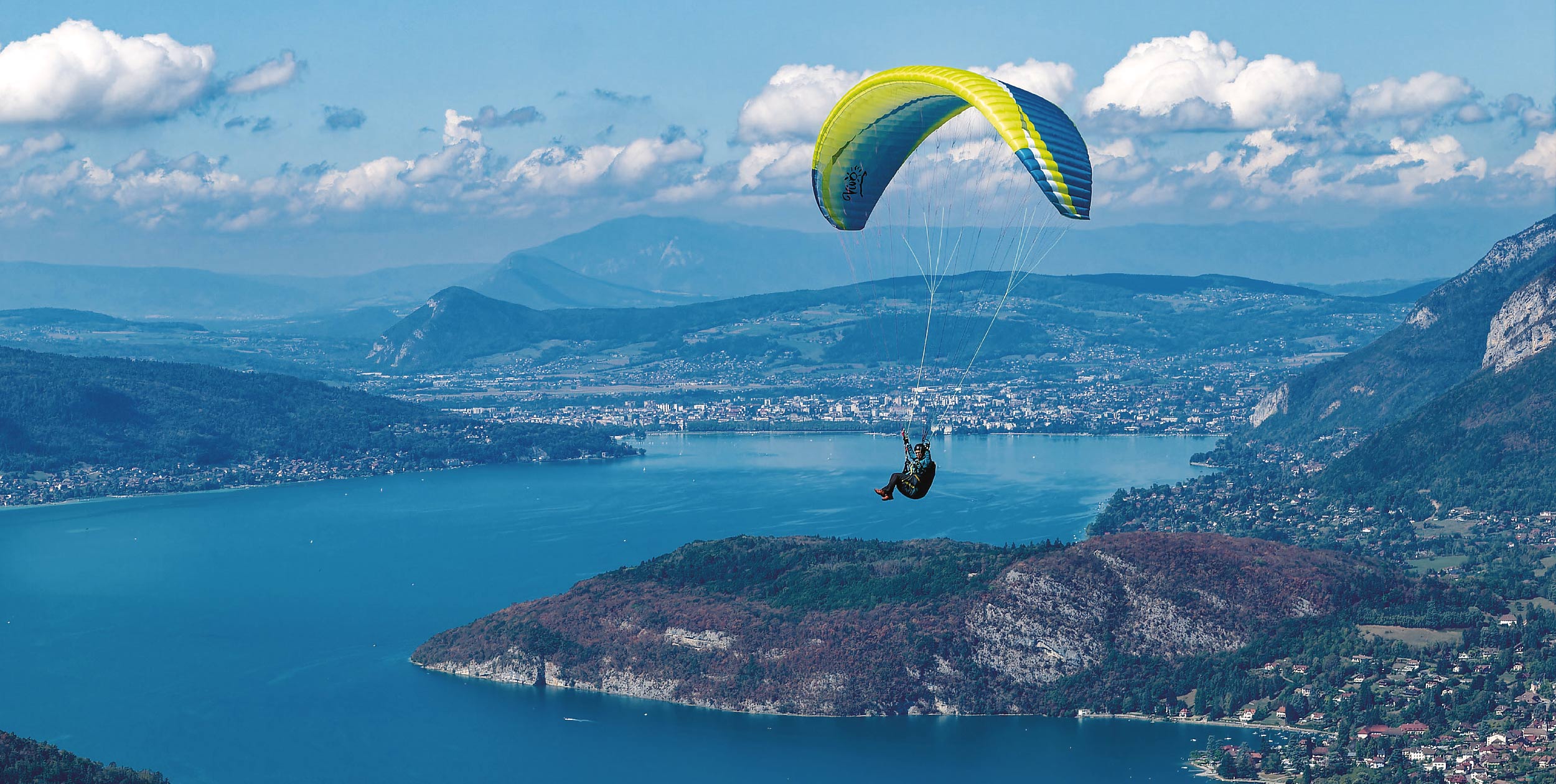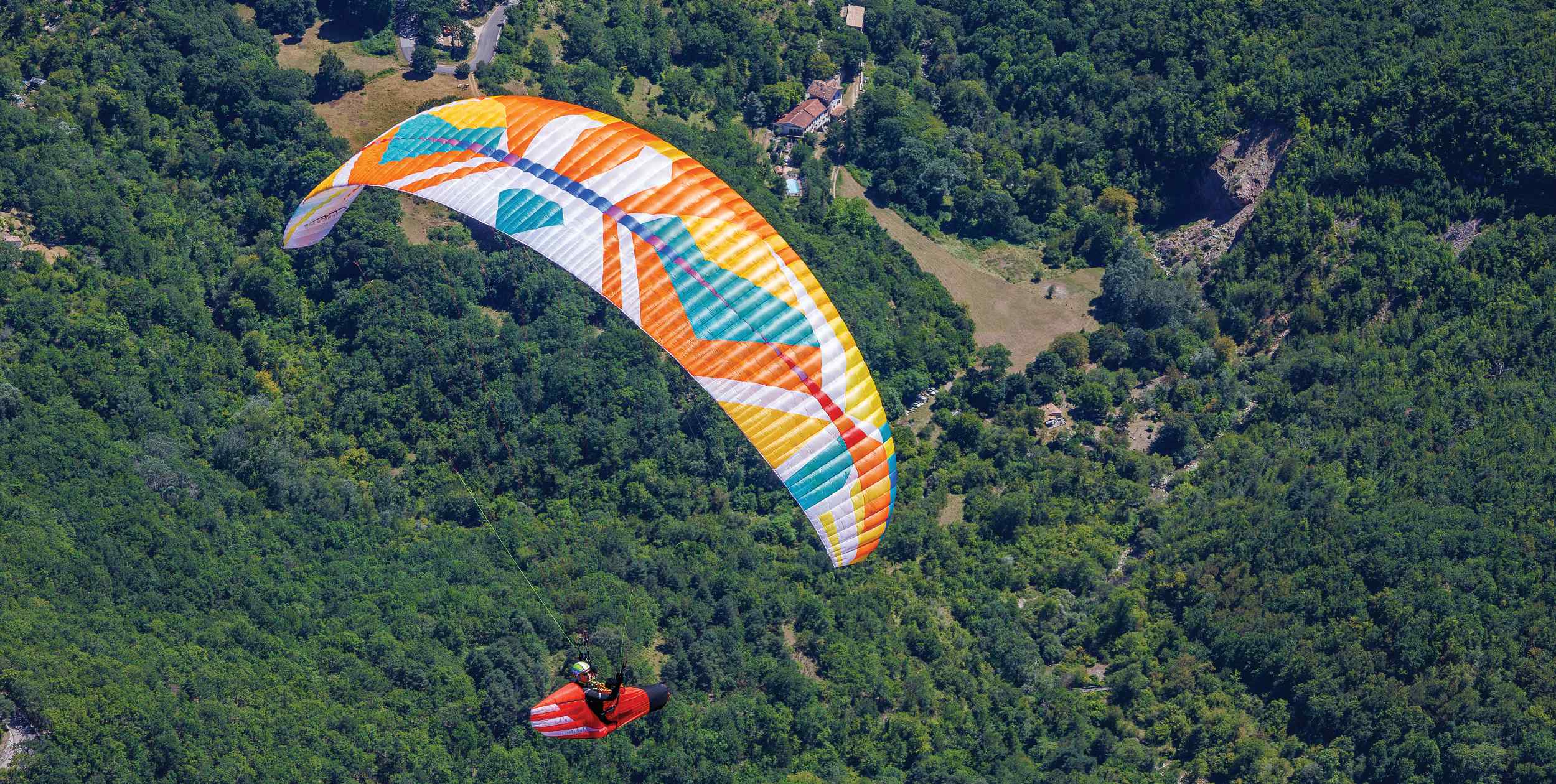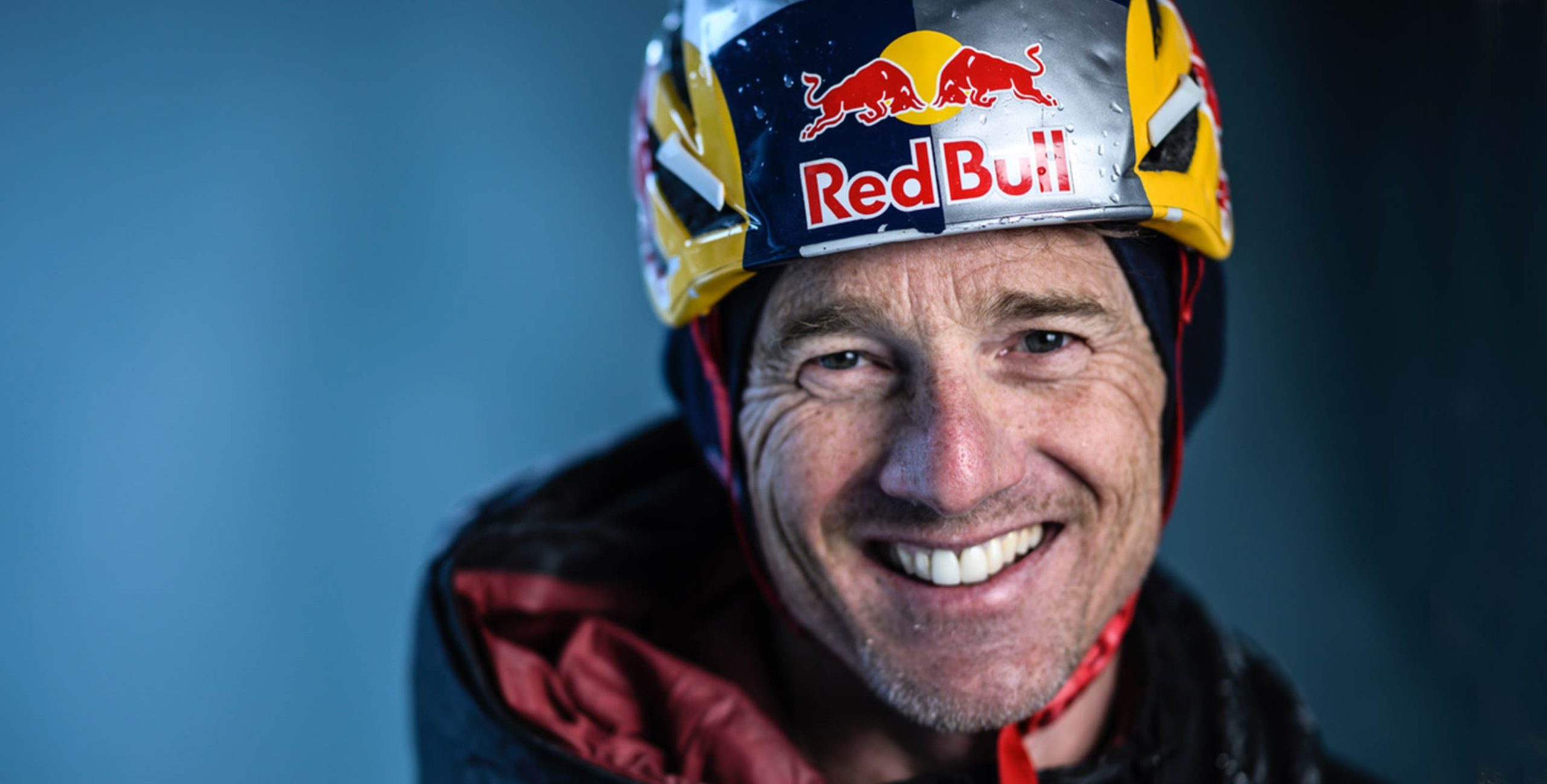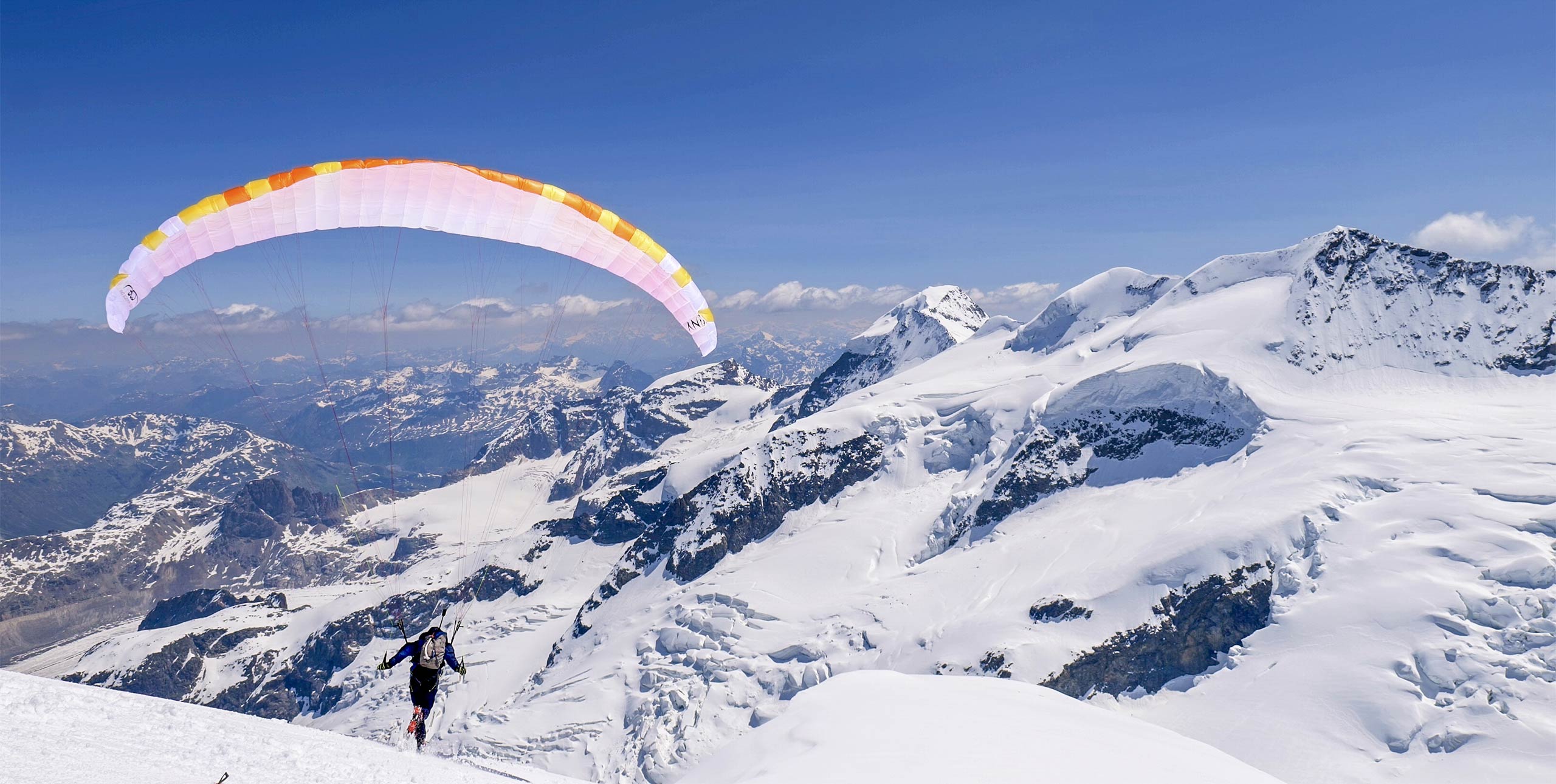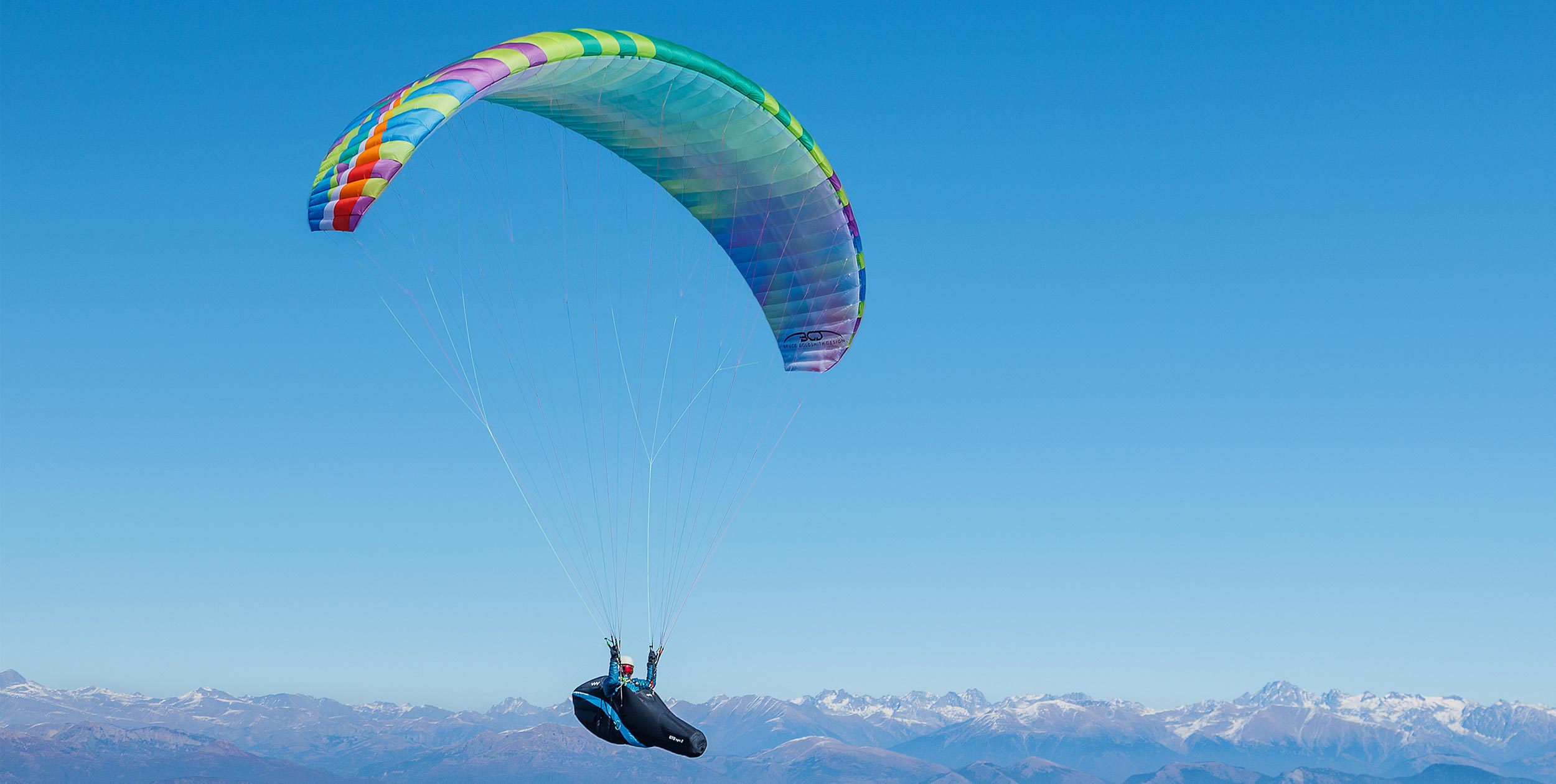
The Epic 2 (EN B) has been refined to appeal to ambitious and hungry intermediate pilots. Marcus King hops on board
When I reviewed the original BGD Epic in 2017 I declared “I’ve flown quite a few of Bruce’s wings over the years – I’m going to stick my neck out and say it’s probably his best.” Quite a hard act to follow. Now after five years the new Epic 2 has been released.
Over five years things change, and BGD is no exception. In that time designer Tom Lolies has joined Bruce Goldsmith on the design team, bringing with him CFD visualisation technology. The new Epic 2 is a product of that Alula simulation software. I wondered how this would change the feel and performance of the wing.
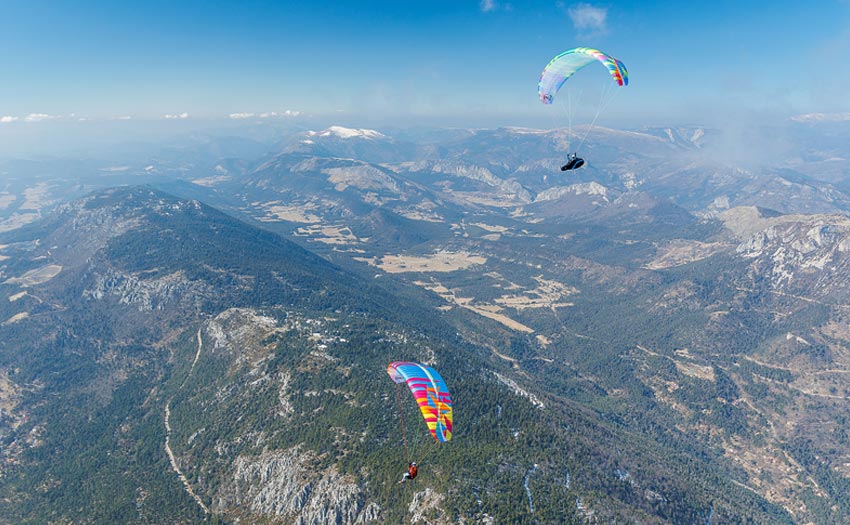
Design
The wing still sports a ‘shattered’ colour scheme similar to the original with a white undersurface. Materials used, however, have changed. BGD have switched from using Dominico to Porcher Skytex 38 for the top surface and 40g/m2 for the bottom.
Design-wise it doesn’t look radically different, with three extra cells at 45 – an increase of aspect ratio from 5.0 to 5.2. This is similar to Ozone’s Buzz Z6 at 5.16 (but with a few extra cells) and Nova’s Ion 6 at 5.19.
BGD say a lot of the development work is hidden away inside the wing. It has a more intricate internal structure thanks to the new software being able to determine exactly where the forces are in flight. Overall, it means the weight has stayed the same – the ML I flew weighs 5.1kg.
Other technology is similar to the original, with a sharknose leading edge using nylon rods of different stiffnesses to keep its shape. Rather than using two pieces on each cell BGD now use a single rod.
BGD use their Chord Cut Billow rather than 3D shaping on the top of the leading edge to reduce wrinkles in the seams. In a change from the original, BGD have brought the double-skin lower-leading-edge from the Cure 2 and Base 2 to this wing. BGD say this improves the stability of the leading edge because internal pressure pushes on this lower skin to tension that part of the wing. At the back, the Epic 2 of course has mini-ribs.
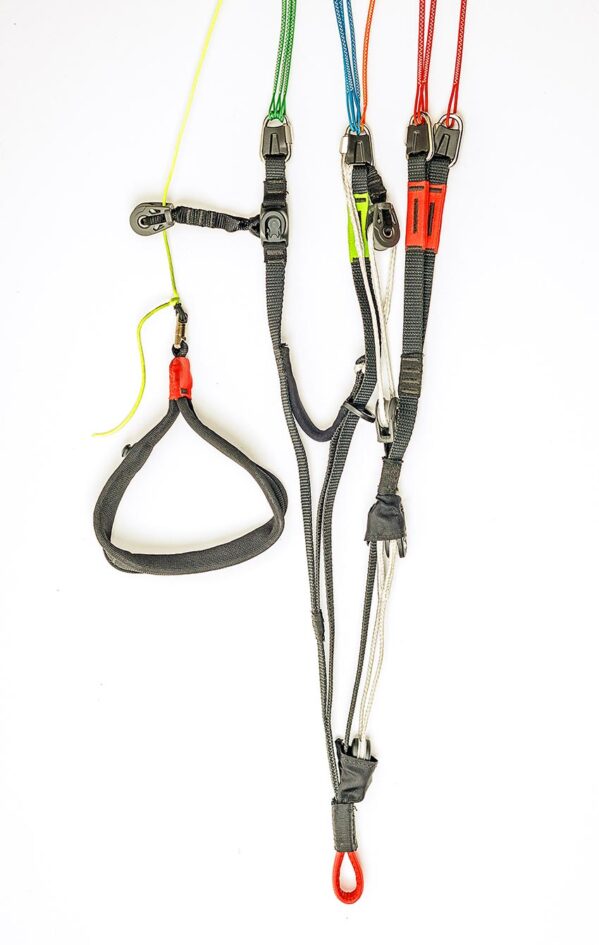
Risers and lines
The risers and line set have seen an update with a new riser design and unsheathed lines used in the mid and upper galleries. The layout is classic three-line layout with D-tabs in the centre of the wing. The upper and mid-lines are unsheathed Edelrid with just the lowers sheathed. This can make it a little more catchy on launches with small plants but is generally not an issue – it’s something we see on most EN-B wings these days.
Something that so far hasn’t been common on low B wings like the Epic is proper B/C controls. The new Epic 2’s risers incorporate the system used on the Base 2. This has a padded area on the rear riser that is connected to a Dyneema cord that pulls on the B-riser via two pulleys. Unlike some systems where the B-riser is ‘floating’ the B-riser is a normal webbing riser that takes the pilot’s weight when on trim. Bruce Goldsmith says this avoids any issues with changes in the length of the Dyneema cord. Using this system you can control the angle of attack of the wing.
The rest of the risers will be familiar to previous BGD wing pilots and are made from 12mm Kevlar webbing. Brakes are held in place with directional magnetic clips. The handles themselves have seen an upgrade and are nicely padded and comfortable in use.
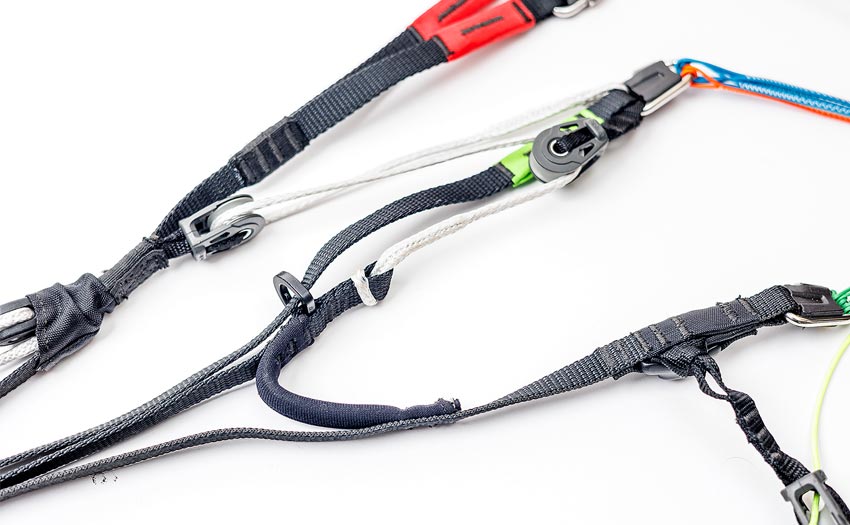
In the air
On launch the wing feels well behaved whatever the wind strength. In lighter winds it fills easily and rises steadily with very little control needed once above your head. With more wind the wing stays calm, rising smoothly with no big acceleration threatening to pull you off your feet.
Once above your head it stops and is easy to control. It’s a great wing to work on your groundhandling skills with – you can move it around without it wanting to fall back too easily. Once you release the brakes it generates lift quickly as you move forward. All very calm.
Since I flew the original Epic I’ve lost a few kilos both in body and equipment with a change of harness. On my first flight I was flying an even lighter harness than normal and had no extra kit putting me just above the 97.5kg mid-point of the wing. Despite being lower in the range I found the wing still turned nicely on the brakes. It has a very linear response with no surprises. Overall travel is long with moderate pressure that ramps up nicely when you go deep. You won’t need to though as it turns well with just the first part of the range. The wing feels more controlled in roll than the original and is pitch stable, making for a reassuring ride.
In thermals the wing isn’t knocked out easily and stays in the turn well. In weak thermals it is easy to keep the wing in a steady turn through the patches of lift. It proved to climb well on stable days with broken weak lift. When things get stronger you can push the brakes a bit harder and add more weightshift to get it banked over with it all feeling well controlled.
Flying around the midpoint I did feel it didn’t drive quite as I would like into the lift but adding a few kilos of ballast sorted this out. With a bit more weight to give the loading I am used to it moves nicely into the cores and is more charged. It retains the well-controlled pitch. My personal preference would be to fly it in the top half of the range.
BGD design their wings to have less pressure in the tips. Bruce advocates this as he thinks it gives you a better sense of what the air is doing. This can mean you get the odd wingtip flutter, especially when lightly loaded. Flying actively will repressurise the tip.
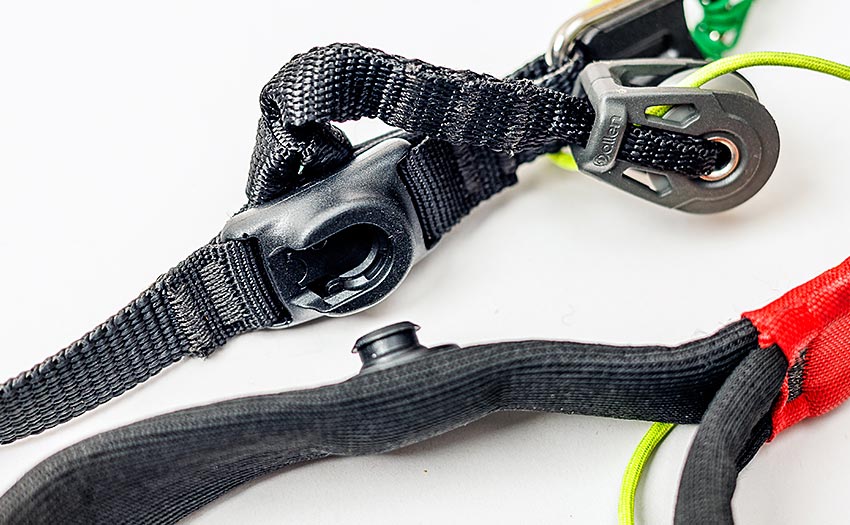
Reassuringly, the wing doesn’t move around much even if you get a small collapse. I pulled bigger collapses and the wing reacts well: let it turn and use the energy to pull out and flick the wingtip back out. There is no big pitching and it all feels controlled.
We didn’t have the conditions for any big XCs during my review period but I was able to fly a couple of local flat 20-30km triangles. Heading off along the ridge it is noticeable that, like on the original, the trim speed is quite fast for a low-B. I was able to keep up with the high-Bs and low-Cs. Adding bar is easy as the pressure isn’t too high. At full bar I was seeing around 10km/h increase in speed with the wing still feeling secure and retaining its pitch stability.
You won’t really be using the B/C controls to stop the wing pitching as it is so well behaved. They are effective for directional control on the bar and can be used to slow up in lift. I was happy flying low along the ridge at half-bar in and out of lift using the rear controls. I have been sceptical about the need for them on this level of wing, but if you rest your hands on them you will get a feel for the air mass that can improve your glide. The Epic 2 feels efficient for the level of wing and I expect to see them peppering the XC leagues.
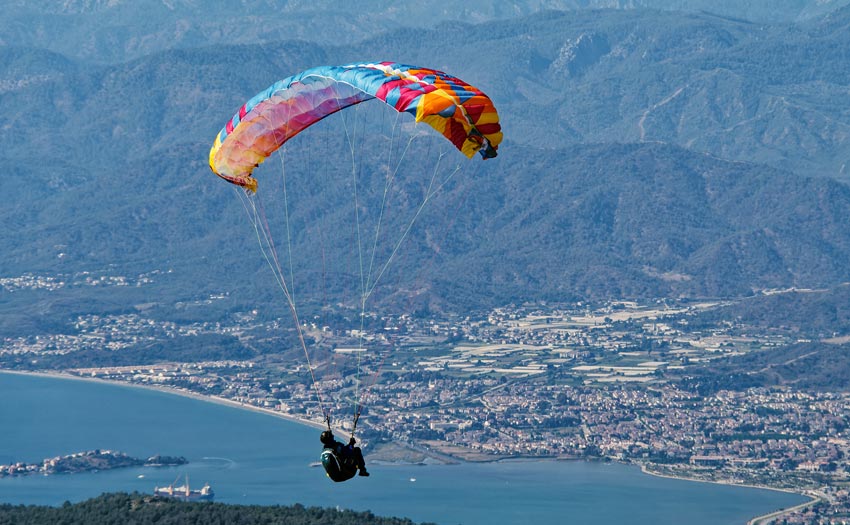
Fun stuff
Big-ears are effective for getting down and can be used with the bar to escape lift. They are stable and roll out slowly once released. Spirals are easily controlled. Wingovers are easy as the wing is tolerant of timing.
BGD still market the wing as an all-round wing suitable for “starting out in freestyle.” Fellow review pilot Erwin Voogt managed to grab an Epic 2 to fly over the bay in Ölüdeniz, back to back with the original Epic. He reported: “Yes, the stalls are just as easy and forgiving with the Epic 2 as with the original. Actually, I made my first controlled helico ever with the Epic 2! The Epic 2 is a bit more dynamic than its predecessor, making dynamic manoeuvres easier and less exhausting. I ticked off asymmetric SATs and spirals, although they did take more muscle power than some higher-level wings. Combined with the easy stall behaviour it makes a good wing for your first steps into acro.”
The verdict
The new Epic 2 feels like it has grown up a little and become a more focused machine. BGD say that it is still an all-round wing but it feels like it has been nudged more to the side of cross-country performance. It is more efficient, more refined and more reassured. A wing that pilots will take on big days out without fatigue setting in.
The Echo 2 brings the same improvements to the lightweight version, making it ideal for pilots looking to start flying vol-biv or use for hike-and-fly or travel.
Both the Epic 2 and the Echo 2 are very capable wings that can take you on cross-country adventures with great performance and good levels of safety and comfort, allowing you to get on with your progression. Weekend warriors will appreciate the ease of use with the ability to fly away from your local hill.
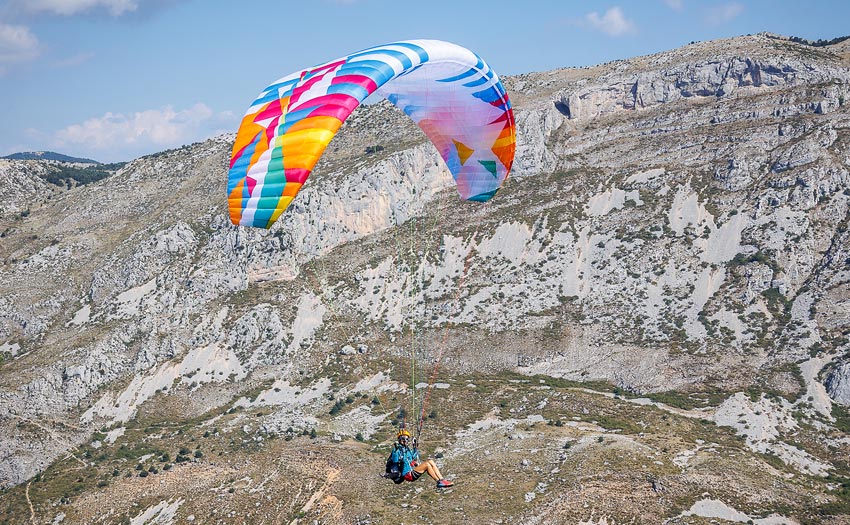
GOING LIGHTWEIGHT: THE ECHO 2 (EN B)
BGD have also launched the Echo 2, the lightweight version of the Epic 2. Design-wise the gliders are pretty much the same and they share the same line-set. The main difference is the Echo 2 is made from lighter fabric – Porcher 27 with 38 on the leading edge for durability. With the changes the wing weighs a whole kilogram less – the ML I flew weighs 4.1kg. The risers are the same as those on the Epic 2, even down to the maillons. This will suit the level of pilot the glider is aimed at better than the bootlace ones we see on some wings.
I flew the Echo 2 (MS) for a hike-and-fly as well as in some strong summer thermal conditions. With a light harness I was just about at the top of the range of 95kg. My first flight was flying home after a night spent on a mountain with camping kit, which pushed me over the weight range. There was no wind on launch and a long glide to my chosen landing.
Forward launching the wing rose smoothly and quickly lifted me off my feet and I settled back for the glide. I kept checking whether I would need to bail to a closer field but the wing glided well. In the past I have found the glide on some light wings can deteriorate when overloaded, as presumably the aerofoil shape is affected by the load, but this didn’t seem to be the case with the Echo 2 and I arrived with height to spare. I touched down gently thanks to the good flare, dumped my extra kit and headed off to try it in the thermals.
As you would expect, flying the wing right at the top of the range felt more dynamic than the larger Epic 2 but it was still well behaved in roll and exuded the same pitch stability. I was able to climb well even in the weaker stuff lower down. As I climbed out into rockier terrain and the thermals got boisterous I could cut inside the cores nicely with no pitching back. It all felt very secure with everything feeling taut at this loading.
In the thermals there was just that bit more feel of what was going on thanks to the light materials. Loaded high it also had more of the nice go-karty feel of the original Epic. I found myself circling at a 4,000m base with a big smile on my face.
Manufacturer’s SPECIFICATIONS
BGD say: “Safe and reassuring, accessible to low-airtime pilots but with handling and performance that experienced pilots will love.”
Use: Thermalling and progression into XC
Pilot level: Talented beginners and intermediates
Sizes: XS, S, M, ML, L
Certified take-off weight (kg): 55-75, 65-85, 75-95, 85-110, 100-125
Flat area (m2): 21, 23, 25, 27, 29
Glider weight (kg): 4.4, 4.6, 4.9, 5.1, 5.4
Cells: 45
Flat aspect ratio: 5.2
Certification: EN / LTF B
Published in issue 238 (April 2023)


